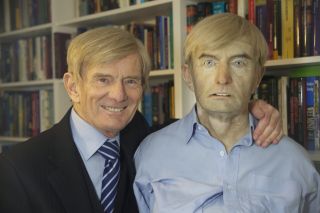We like to think of ourselves as sensible shoppers. As rational consumers who compare prices, evaluate quality, calculate costs and reach for cash or credit card only after careful reflection. The truth is, however, that many of our purchases—even big-ticket items—are all too often spur of the moment decisions we may later struggle to justify even to ourselves.
Surveys have shown that nine out of ten consumers impulse buy at least one item per shopping trip, with more than half admitting to as many as six. Over a lifetime this has been estimated to amount to an individual spend of around $80,000.
When I stopped people leaving a supermarket and asked if they had impulsively bought anything whilst doing their weekly shop, only one person out of the sixty interviewed claimed to have stuck strictly to their shopping list and not been tempted by any of the special offers.
“You’re a pretty unusual shopper,” I told him. “Not really,” came the reply. “I’m a supermarket manager and know all the tricks!”
So what sort of things do people buy on a whim?
When I interviewed London shoppers, their answers ranged from clothing to smart phones, cars, and a $2,000 mountain bike to a brand new home. You can see some of these interviews on www.impulsive.me.uk.
In the USA and UK alone, shoppers currently spend an estimated $38 billion a year on impulse buys, or ‘splurchases’ as some retailers call them. Approximately 62 per cent of US supermarket and 80 per cent of luxury good sales comprise impulse purchases. In Britain these account for between 45 and 100 per cent of turnover.
The reasons why consumers part so impulsively with their cash have been the subject of extensive studies.
One of the earliest to investigate the topic was William Applebaum of Stop & Shop Inc. (1) in 1951. He pointed the finger of blame at advertising and marketing. A charge which, with good reason, is still made today.
In 1962 Hawkins Stern, an Industrial Economist at the Stanford Research Institute in Southern California identified four main types of impulse buy.
(1) Pure impulse buying: is a novelty or escape purchase, which breaks a normal buying pattern.
(2) Reminder impulse buying: occurs when a shopper sees an item or recalls an advertisement or other information and remembers that the stock at home is low or exhausted.
(3) Suggestion impulse buying: is triggered when a shopper sees a product for the first time and visualises a need for it.
(4) Planned impulse buying: takes place when the shopper makes specific purchase decisions on the basis of price specials, coupon offers and so forth. (2)
Retailers devote much time and money to identifying the most effective ways of pressing each of these four ‘buy buttons’ in the customers' brains. Some of the techniques used for this purpose will be described in future blogs.
During the 1980’s, Dennis Rook, a Research Associate with DDB Needham Worldwide, suggested that impulse buying—which he described as “pervasive…extraordinary and exciting” —occurs: “When a consumer experiences a sudden, often persistent urge to buy something immediately. The impulse to buy is… prone to occur with diminished regard for its consequences” (3)
In the past, perhaps due to the lack of perceived control with which it is associated, many psychologists shared the same negative view of impulse buying. More recent research suggests, however, that shoppers do not, for the most part, consider it a mistake to make spur of the moment purchasing decisions. (4) Only around one in five express any regret for their impulse buys with four out of ten claiming to feel good about them. (5)
While shoppers often blame their lack of willpower, the truth is that their impulse buys owe as much to the sophistication of modern marketing, advertising and retailing strategies as to human weakness.
“Marketing and advertising prey on mindless processing by both encouraging it and exploiting it”, comments Erika Rosenberg of the University of California at San Francisco. She points out that their commercial success depends on “people not thinking very much about whether they really need something before they buy it."
My own studies into the neuroscience of impulse buying, research which involves measuring the physiological responses of consumers while they are shopping ![]() as well as tests conducted in my laboratory, support the notion that impulse-driven shopping is controlled by desires, emotions and sometimes anxiety, operating below the level of conscious awareness. Motives, why the impulse purchase has been made, are only then consciously rationalised and explained.
as well as tests conducted in my laboratory, support the notion that impulse-driven shopping is controlled by desires, emotions and sometimes anxiety, operating below the level of conscious awareness. Motives, why the impulse purchase has been made, are only then consciously rationalised and explained.
Now you might think that, having spent some twenty years researching impulsivity in general and impulsive shopping in particular I would be immune. Not so!
Although less impulsive now than when I was young I still find some shopping temptations hard to resist. As the vast array of gadgets and robots cluttering up my university office will testify.
I must also hold some kind of a world record for one of the most ridiculous impulse purchases ever made.
I bought myself a second head.

Me and my second head
This life-cast, animatronic replica was not merely costly but, as the photos show, uncomfortable to have made. It required me to sit motionless for what felt like hours with straws stuffed up my nostrils to breathe through while a blue plastic gunk was poured over my head!
Why did I buy it?
I like to explain it was to create an attention-grabbing centrepiece for my brain lectures. While I do use it for this purpose—and certainly when I rip off the top of my own ‘head’ to display my own rubbery ‘brain’ even those slumbering in the back row sit up and take notice—the honest truth is it was purely an impulse buy.
Like many impulsive actions, when pressed to give a reason for my actions all I can do is lamely mutter: “It just seemed like a good idea at the time.”
So how might you save some money by shopping more mindfully and less impulsively? Here are six suggestions.
1] Make a list and stick to it. A list provides a focus and keeps you alert.
2] Avoid shopping for food when hungry. In one study I conducted, hungry shoppers not only bought significantly more food but more high fat and high sugar foodstuffs.
3] Use clicks and bricks. Compare prices and offers on-line first. Do the initial window shopping in the calm and familiar surroundings of home before checking out the stores.
4] Before closing a deal on a high-ticket item, walk away and consider it again in a new and different location. The words every sales person dreads are ‘I’ll think about it.’ They know that when customers do think about a deal they often walk away from it.
5] Retailers have a variety of proven techniques for creating an emotional desire to buy. I will be describing some of these in a future blog. For the moment just bear in mind that a modern shopping mall or supermarket is actually a giant machine design to sell things.
6] Good sales people will be friendly and helpful. Just keep in mind when interacting with them that being friendly is not the same as being your friend and that they only person they have any reason to help is the one who pays their wages. And that is, only indirectly, you!
References
(1) Applebaum, W. (1951) Studying Customer Behaviour in Retail Stores, Journal of Marketing. Page 172 – 178.
(2) Stern, H. (1962) The Significance of Impulse Buying Today, Journal of Marketing. (April): 59 – 60.
(3) Rook, D. W. (1987) The Buying Impulse, Journal of Consumer Research.14, September: Pages 189–199. Quoted from page 191.
(4) Hausman, A. (2000) A multi-method investigation of consumer motivations in impulse buying behavior. Journal of Consumer Marketing. 17 (5): 403-417.
(5) Rook, D.W. (1987) op. cit.




